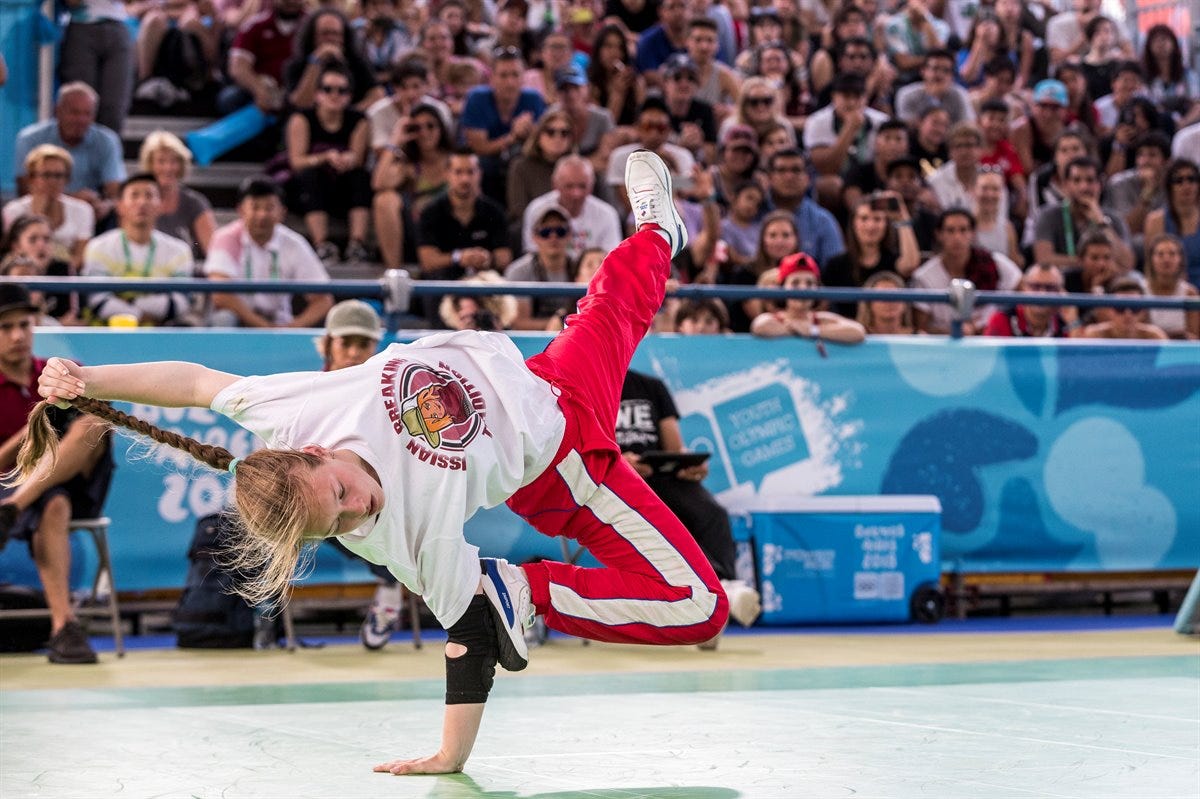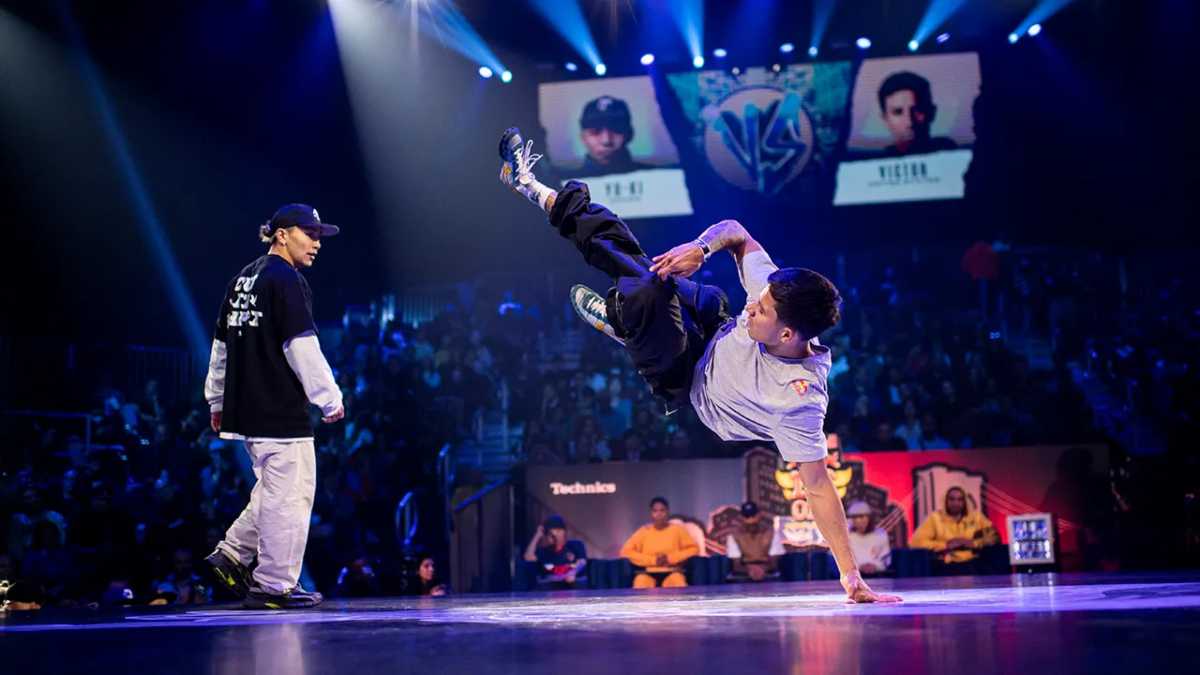Historical Moments of Breaking at the Summer Olympics

Breaking, a vibrant and energetic dance form that originated in the streets of New York City, has taken a remarkable journey from its humble beginnings to its prestigious inclusion in the Summer Olympics. This evolution reflects the sport’s growing popularity and cultural significance, captivating audiences worldwide with its athleticism, creativity, and raw energy.
The Evolution of Breaking: From Street Culture to Official Sport
Breaking’s journey to the Olympics is a testament to its resilience and global appeal. From its origins in the 1970s as a street dance form, breaking has evolved into a recognized sport, attracting dedicated practitioners and passionate fans. This evolution can be traced through a series of pivotal moments that marked its rise to prominence.
Significant Moments in Breaking History
Breaking’s inclusion in the Olympics is the culmination of years of dedication and advocacy from breakers, organizers, and supporters. This timeline highlights key moments that shaped the sport’s journey to the global stage:
- 1970s: Breaking emerges as a street dance form in New York City, gaining popularity among youth and becoming a cultural phenomenon.
- 1980s: Breaking spreads internationally, gaining recognition as a distinct dance style and attracting dedicated practitioners.
- 1990s: Breaking competitions begin to emerge, with organizations like the World B-Boy Organization (WBO) and Red Bull BC One establishing a competitive framework for the sport.
- 2000s: Breaking gains further momentum, with the establishment of major competitions and the emergence of prominent breakers who redefine the sport’s boundaries.
- 2018: Breaking is included in the Youth Olympic Games in Buenos Aires, Argentina, marking a significant step towards its inclusion in the Summer Olympics.
- 2020: Breaking is officially recognized as a sport by the International Olympic Committee (IOC), solidifying its place on the world stage.
- 2021: Breaking makes its debut at the Summer Olympics in Tokyo, Japan, showcasing the sport’s athleticism and artistry to a global audience.
Legendary Breakers and Their Impact
The inclusion of breaking in the Olympics is a tribute to the pioneering efforts of legendary breakers who paved the way for the sport’s recognition and global popularity. These individuals, through their innovation, skill, and passion, helped shape the identity and evolution of breaking.
- Ken Swift (Rock Steady Crew): Widely considered one of the pioneers of breaking, Ken Swift’s innovative moves and influence on the Rock Steady Crew helped establish breaking as a distinct dance form.
- Crazy Legs (Rock Steady Crew): Another founding member of the Rock Steady Crew, Crazy Legs is renowned for his energetic style and contributions to the development of breaking techniques.
- B-Boy Poppin’ Taco (Rock Steady Crew): A legendary breaker known for his unique style and powerful moves, Poppin’ Taco helped solidify the Rock Steady Crew’s reputation as one of the most influential breaking crews.
- B-Boy Storm (Floorlords): Storm, a member of the legendary Floorlords crew, is known for his dynamic footwork and innovative moves, inspiring generations of breakers.
- B-Boy Hong 10 (Jinjo Crew): Hong 10, a member of the renowned Jinjo Crew, is recognized for his impressive power moves and acrobatic skills, elevating breaking to new heights.
Impact of Breaking’s Inclusion in the Olympics
The inclusion of breaking in the Olympics has had a profound impact on the culture and development of the sport. It has brought global recognition to breaking, attracting new audiences and fostering a wider appreciation for its athleticism, artistry, and cultural significance.
- Increased Visibility and Recognition: Breaking’s inclusion in the Olympics has significantly increased its visibility and recognition on a global scale. This has brought the sport to the attention of a wider audience, including those who may have been unfamiliar with its history and cultural significance.
- Enhanced Support and Funding: The Olympic recognition of breaking has led to increased support and funding for the sport. This has enabled organizations and athletes to invest in training, facilities, and other resources, fostering a more sustainable and competitive environment.
- Greater Opportunities for Athletes: The inclusion of breaking in the Olympics has created greater opportunities for athletes to pursue their passion professionally. It has provided a platform for them to showcase their skills, compete at the highest level, and earn recognition for their achievements.
- Cultural Exchange and Global Unity: Breaking, with its roots in street culture, has fostered cultural exchange and global unity. The Olympics have provided a stage for breakers from different backgrounds and cultures to come together, celebrate their shared passion, and promote understanding and respect.
Breaking Techniques and Styles at the Summer Olympics

Breaking, a dynamic and visually captivating dance form, has captivated audiences worldwide. It involves a blend of athleticism, artistry, and creativity, showcasing a diverse range of techniques and styles. At the Summer Olympics, breaking takes center stage, highlighting the unique skills and expressions of athletes from across the globe.
Breaking Techniques
Breaking techniques are the fundamental building blocks of the dance form, providing the foundation for complex moves and intricate sequences. These techniques can be categorized into four primary groups: footwork, power moves, freezes, and top rocks.
- Footwork: Footwork forms the basis of breaking, providing the foundation for all other techniques. It involves intricate foot movements, such as running man, six-step, and grapevine, which allow dancers to navigate the floor with agility and precision.
- Power Moves: Power moves are dynamic and acrobatic maneuvers that require strength, flexibility, and coordination. Examples include windmills, headspins, flares, and backspins, which showcase the dancers’ physical prowess and control.
- Freezes: Freezes are static poses that highlight the dancers’ balance, flexibility, and creativity. These poses often involve intricate body contortions, such as handstands, elbow stands, and chair freezes, creating visually striking and memorable moments.
- Top Rocks: Top rocks are rhythmic and expressive movements performed standing up, often incorporating elements of hip-hop dance, jazz, and funk. They are used to transition between different sections of a breaking routine, adding variety and energy to the performance.
Breaking Styles, Breaking at the summer olympics
Breaking encompasses a variety of styles, each with its unique characteristics and influences. Some of the most prominent styles include B-Boying, B-Girling, and other variations.
- B-Boying: B-Boying, often referred to as breakdancing, is the most widely recognized style of breaking. It emphasizes power moves, intricate footwork, and a strong focus on acrobatics and athleticism. B-Boys typically incorporate elements of martial arts and gymnastics into their routines, showcasing impressive physical feats and dynamic movements.
- B-Girling: B-Girling is a style of breaking that celebrates the unique talents and expressions of female breakers. It often incorporates elements of flexibility, grace, and artistry, with a focus on creative and fluid movements. B-Girls often showcase a combination of power moves, freezes, and top rocks, highlighting their individuality and technical skills.
- Other Variations: In addition to B-Boying and B-Girling, other variations of breaking exist, incorporating influences from different dance styles and cultural backgrounds. For example, some breakers may incorporate elements of popping, locking, or hip-hop into their routines, creating a diverse and eclectic range of expressions.
The Impact of Breaking on the Summer Olympics: Breaking At The Summer Olympics

Breaking’s inclusion in the Summer Olympics marks a significant step for both the sport and the Games themselves. This move brings with it a fresh wave of energy, cultural relevance, and a diverse audience, potentially redefining the Olympic landscape.
The Cultural Significance of Breaking and its Appeal to a Younger Audience
Breaking, with its roots in street culture and hip-hop, has a unique ability to resonate with a younger generation. The dynamic, expressive nature of the sport, combined with its connection to music and urban art forms, makes it particularly appealing to a demographic that is often underrepresented in traditional Olympic sports. Breaking’s inclusion in the Games has the potential to attract a new wave of viewers, especially young people who might not otherwise be interested in the Olympics.
Breaking at the summer olympics – Breaking records at the Summer Olympics is a testament to human potential, pushing the boundaries of physical capability. It’s a reminder that even the most seemingly impossible feats can be achieved with dedication and hard work, just as the astronauts in christopher nolan interstellar strive to find a new home for humanity.
The Olympics, much like the film, remind us that even when facing insurmountable odds, the human spirit can persevere and break through limitations, reaching for the stars.
Breaking at the Summer Olympics is a captivating spectacle, showcasing athleticism and resilience. The term “breaking” itself evokes a sense of pushing boundaries and defying expectations, much like the cultural term “nicka” in Lithuania, nicka lithuania , which refers to a playful and mischievous spirit.
This spirit of pushing limits and embracing challenges is evident in the way athletes approach breaking, constantly striving to innovate and redefine the boundaries of the sport.
